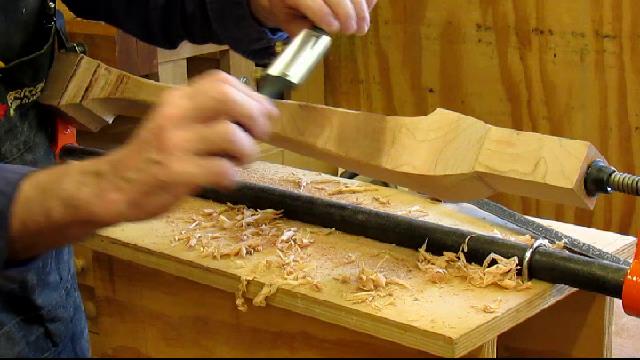As it turns out it is also in Norman Vandal's book Queen Anne Furniture, Norman received permission from Gene Landon to publish Gene's design from a 1985 Fine Woodworking article on making the Queen Anne Handkerchief table.
The original has pad feet but later Chippendale style tables had ball and claw feet. So that is what I am going to build from cherry.
I started by assembling my references, Norman's book, the Fine Woodworking article and the photo from the antiques data base.
I was able to blow up the drawings from Norman's book to full size, so I did not have to make my own full size drawings.
I started with the leg drawing and modified it to include the material for a ball and claw foot. This leg and foot was almost identical to the leg and foot I used to make the Turret Top Tea Table in an earlier post here and on Youtube.
I had 4 leg blanks in cherry that had been sitting around my wood storage for years, so that helped influence my decision to make it from cherry. These rough sawn where slightly under 3 inches but were quite a bit out of square. They needed a lot of work to get square at 2 5/8 inches.
All squared up and marked with the pattern. The extra material at the top will be cut off and used for the knee blocks.
Now for the band sawing of the cabriolet legs. The pattern is applied on two adjacent sides. You cut out one, then tape it back together and cut out the other side.
Cutting out the second side after taping it back together.
Cut out legs and lots of clean up to do.
I have a number of Youtube videos which show clean up of cabriolet legs using a round bottom spokeshave, rasp and files. The rasp and spokeshave remove the bandsaw bumps and get a nice smooth line to the shape of the leg.
Here I am using a number 50 Nicholson rasp to round over the sharp corners of the leg. The ankle of the leg is just about round at 1 inch.
Here I am using an almond shaped fine file to remove the tool marks from the rasp.
One done, looks pretty good. I will carve the ball and claw now on this leg and then repeat the process on the other three legs. This allows me to break up the tasks to keep it interesting, not the most efficient way but it keeps me out of the saloons.
Here is today's video:













No comments:
Post a Comment